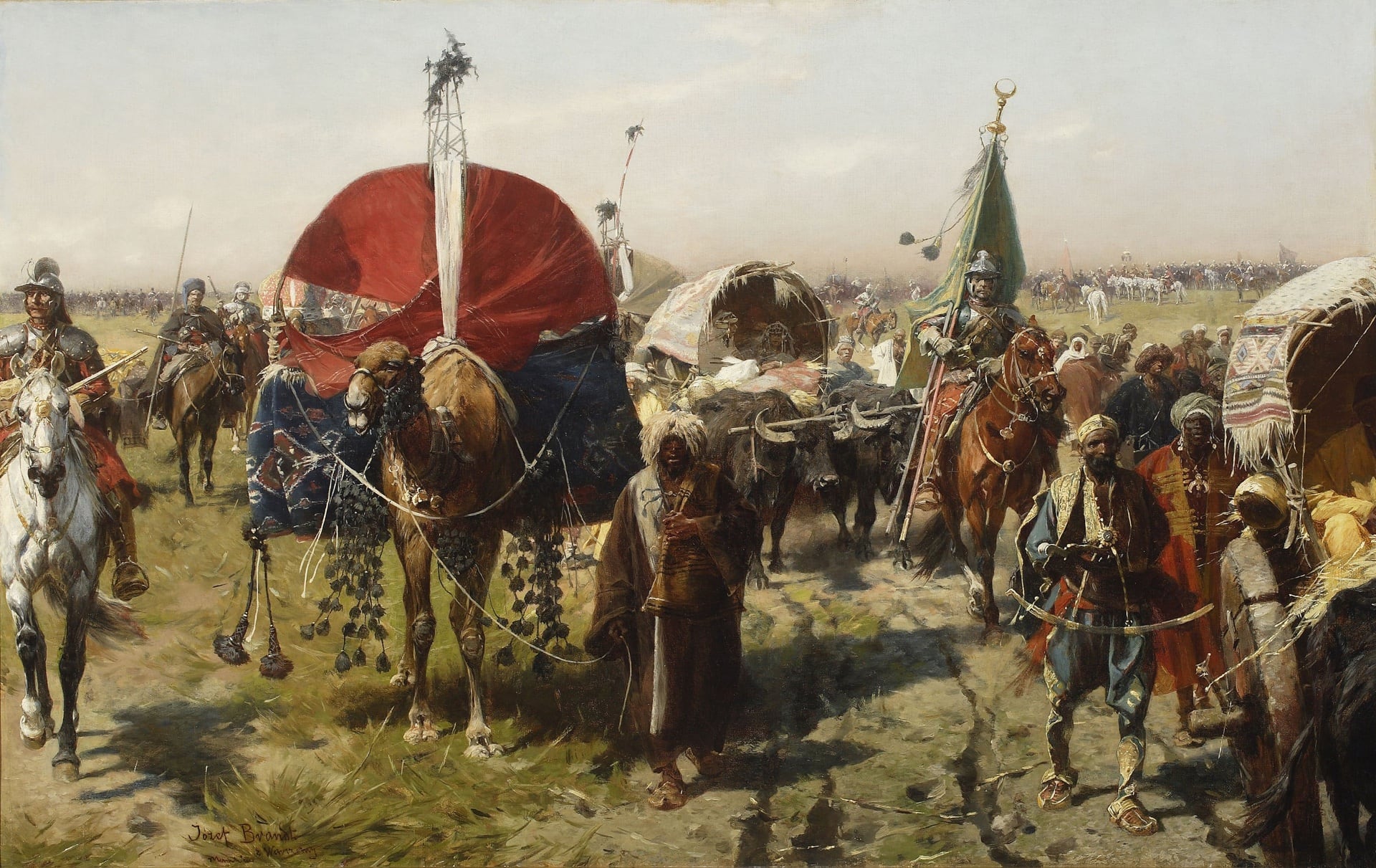05 December 2014

“March with the Trophies – Return from Vienna”, Józef Brandt, c. 1880. Oil on canvas, 72 X 112 cm. Private collection.
Józef Brandt harboured a fascination for the history of 17th century Poland, and his favourite themes included ballistic scenes and genre scenes before and after the battle proper –all and sundry marches, returns, supply trains, billets and encampments, patrols, and similar motifs illustrating the drudgery of warfare outside of its culminating moments. This piece, depicting Polish troops on their way home after their triumph over the Turkish forces besieging Vienna in 1683, ranks amongst the finest in this group of Brandt’s works. The realistic, frontal composition depicts a train of Poles, Turkish prisoners, and assorted carts and belongings –all escorted by hussar riders– making their way across a flat expanse.
This exotic, colourful painting captivates with its technical perfection, the sheer variety of well-characterised figures, and the rich assortment of props. In its execution, Brandt drew on his considerable knowledge of military equipment and historical costumes. His Munich studio has actually been referred to as a small museum on account of the vast collection of weapons, costumes, and Oriental curios which he kept there and used in his works.
Janina Zielinska
Tuesday - Saturday 10:00 - 19:00
Friday 10:00 - 22:00
Sunday 12:00 - 18:00
The museum is closed on Mondays.
On Wednesdays, the students can
visit the museum free of admission.
Full ticket: 300 TL
Discounted: 150 TL
Groups: 200 TL (minimum 10 people)